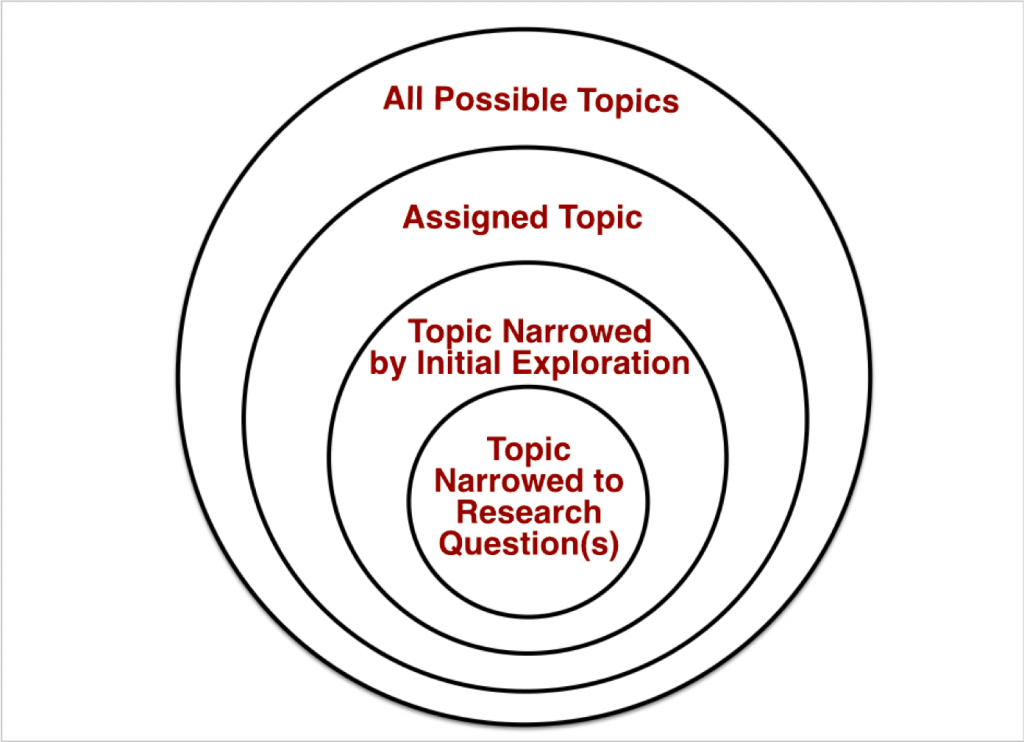Part 1. Get Started on your Research
1 Narrowing a Topic
Defining your research question is a process of working from the outside in: you start with the world of all possible topics (or your assigned topic) and narrow down until you’ve focused your interest enough to be able to state precisely what you want to find out, instead of only what you want to “write about.”
Going through this process can be the hardest part of doing research, but once you have a question that is realistically scoped (not too broad, not too narrow) it will guide the rest of your work.
The Process of Narrowing a Topic

ACTIVITY: Which topic is narrower?
Now it’s your turn. Practice thinking about narrower topics with these 3 examples. Click the arrow to show the next question.
TIP: Use some of the 5 Ws to help narrow your topic to a searchable question
Your assignment is to write on the topic of higher education. You decide you want to write about the high cost of tuition. But that’s still too broad.
Start by asking some, or all, of the following questions.
| Question | More specific focus |
| Who? | first year students, mature students, part-time students |
| What? | graduation rates, degree completion, attrition, dropout |
| When? | last 10 years |
| Why or how? | financial burden, employment, student debt |
From asking these questions, you might come up with a research question like this:
“How does the high cost of tuition impact the degree completion of mature college students?”
But Avoid Getting too Narrow
Be careful about getting too specific with your research question. Not every question that you come up with will be searchable.
For the above question about college tuition, the important questions to ask would be who? and what? Trying to find information on the impact of rising tuition in a particular city or province will be too restrictive, and the location may, in fact, be irrelevant to the search; a large-scale study across Canada or North America would likely yield applicable information.
The bottom line is, you will be working toward a balanced research question that is specific enough to guide you in your research, but not too restrictive.
ACTIVITY: Find the balanced topic
Now it’s your turn. Practice thinking about balanced topics with these 3 examples. Click the arrow to show the next question.

